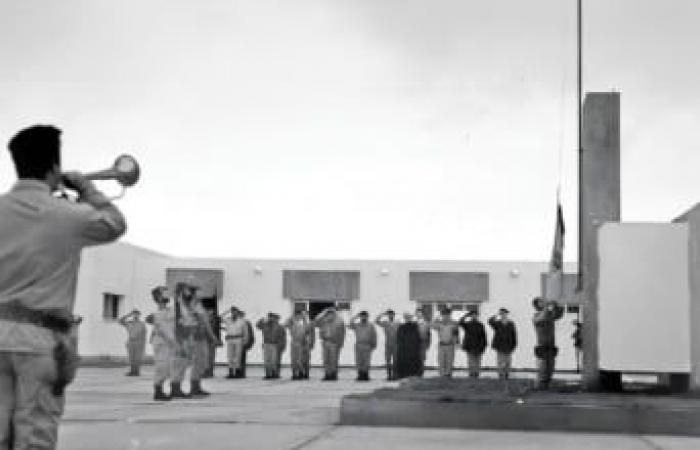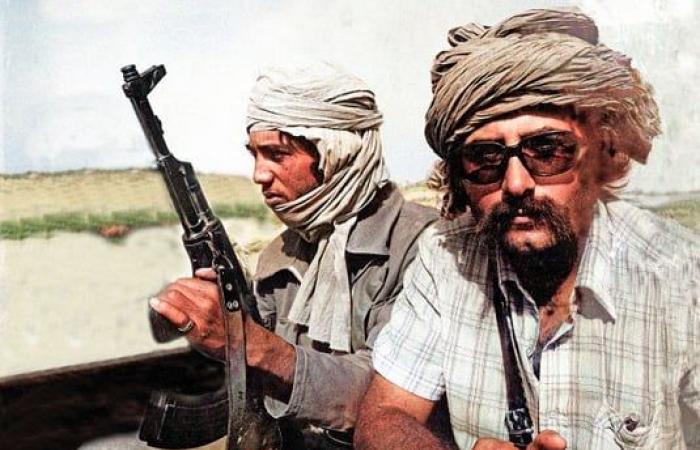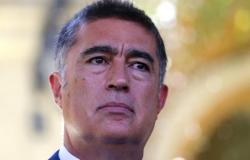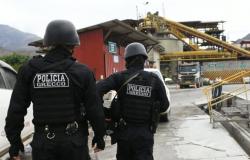Guard One of the biggest graphic treasures of the end of the Spanish Saharaprovince number 53 occupied since 1975 by Morocco, and of the subsequent struggle of the Saharawi for its independence. José Luis de Pablos is the author and executor of a documentary fund that fights dismembered and is now useful to claim the unfinished battle of the last colony of Africa.
“My first encounter with Sahara was completely fortuitous,” recalls the Spanish photojournalist in an interview with The independent. “I was working instead16 and at that time Ander Landáburu and I went out for the Sahara. when we arrived at El Aaiún it turns out that in the same Iberia plane we had arrived they wanted to return us because the territory was reserved matter,” says Pablos.
The Spaniards have ended up going from other places in the world because they were difficult to maintain or distingu
His first trip, in 1974
Reporter and photographer landed in Sahara in 1974, in the last bars of the Spanish presence in the territory under Moroccan yoke. Few could predict the green march – the Moroccan invasion of the Spanish colony of which the half century is fulfilled this year – that months later would certify the end of the Spanish Sahara. “They ended up authorizing the entry into the territory and we were the first two journalists to start coverage,” recalls Pablos.
Both would end up contacting him Polisario Front. “It was the Saharawi clandestine guerrillas that had formed a little earlier. We met them,” “There was an armed struggle against the Spanish army to achieve independence. There was Spanish Saharawi and military who lost their lives.” “We collected two versions: that of the Spanish military, who did it with some caution because we belonged to a controversial magazine for the government; and that of the Polisario, which received us with open arms. They provided us with interviews and met with us in a very disguised way in various places,” he evokes.
One of those meetings was with The current polisarium leader, Brahim Ghali. “In the portraits they are covered so that they were not recognized by the Spanish army. Everyone belonged to well -established Saharawal families, with businesses. They were quite serious people. They knew very well what they were doing and knew that the only way to get it was through the armed struggle, but they needed international support.” Later, Pablos ended up embedded in the Saharawi assault units. “There are images in which I capture that impressive circus when we are starting to attack. It was night and one wondered what was coming to us.”
The Sahara captured by José Luis de Pablos
To that first initiatory visit others were followed. “In 1975 I returned with the green march. I was at the time of the withdrawal of the Spanish army and the entrance of the Moroccans as Spanish troops were retiring. There was some kind of confrontation with the Saharawi, but they could not do anything. From that moment they began to escape towards the desert,” he says. Its photographic file, which covers from mid -1970 to 2000, contains around 90,000 negatives and raises act of the end of Franco and the hesitant democratic transition. 10% of the material corresponds to the successive trips to the Sahara.
An unfinished battle
“It was a totally unknown theme. When you arrived, you met a national radius post in Spain and good quarters of the Spanish army. The Aaiún, the capital, was surrounded by areas of nomadic nomads Saharawis,” he says. There was a strong feeling of independence, underlines Pablos. “I remember an occasion when the UN landed in the Sahara that, suddenly, dozens of Saharawi flags appeared. I still put my hair to tip by remembering it.”
About to commemorate the fifty years of the occupation, the photographer considers that “the story is not over.” “The Sahara continues to depend on Spain. A wall of more than 2,000 kilometers of extension was built and Rabat stayed with two of the most valuable resources, the phosphates and the fishing. But the polisarium continued to attack in very fun offensives: they looked like the wars of the Indians that appear in the movies. They assaulted caravans of Moroccies and then disappeared quickly. We were close to El Aaiún, where we were taking photographs of the Spanish ships that had been arrested by the Polisario and attacks. ”
Pablos presume to be One of the graphic reporters that has signed the most conscientious and sustained work in time. “I even have images of the Polisario Army preparing and training in the military fields to attack the wall and disable the bombs they put in the combat cars,” he details. After 1975, he returned every two or three years to document the armed conflict. “The preparations made by the Spanish army so that the green march did not enter had guarantees: it established mines and notices that, in case they passed such a line, they would shoot. And so they did: the green march reached a certain point. From there it did not happen because if it passed, the Spanish army was willing to respond. When the Spanish soldiers left, because they quietly they were entering little by little and occupying the places that Spain had left little by little barracks that the Spanish army and the legion had left. ”
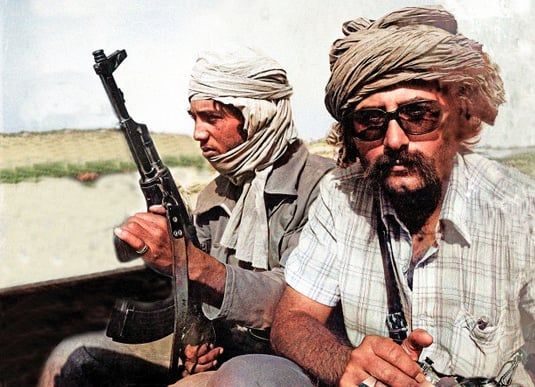
The half century that has passed, from Pablos has extracted the conviction that Morocco is a neighbor from always distrusting. “Whenever there has been an agreement, the Moroccans have broken it. The situation today is very difficult. With Morocco you cannot reach any kind of agreement because it is a rather treacherous town. You can’t get anything. When it seems that you are going to get something, they break it, ”mutters.
For some time in the late 1970s of Pablos he imagined returning to the Saharawi territory. Today, on the other hand, I see it more remote, less possible. “We thought that, after the departure of the territories of Sahara, we were soon returned to the point that we had remained that we would be the first two journalists who would return to the Sahara with them. It was not achieved,” he admits. Landáburu died in October 2022 at 77without being able to fulfill that promise.
“Time does not exist”
“One of the things that Arab peoples have is that time does not exist. Then it is in the long term. And humans have a limited date,” he warns. Pablos does not even believe that Spain has signed transcendental changes with respect to the Sahara. “The Malvinas were Spanish and left, left. Then the English arrived and occupied them and the Argentines protested. We have ended up going from other places in the world because it was difficult to maintain or far or whatever it is and the others have arrived and they have occupied it. The last ones were islands that we had in the Pacific. So we have always been.”
The historical debt is and exists
A tendency to abandonment in front of which the photographer, a privileged witness of a not -so -remote time, claims a memory exercise. “The historical debt is and exists. It is inconceivable that, if it was a Spanish province, its citizens are not now allowed to renew the identity card when it fulfilled their expiration.”
“There are many issues that have been important to me in my professional life but it is possibly the one that I have been covering the longest. I even took days of vacation to go on topics,” he acknowledges who looks for final destination for his photographic archive. “I don’t want four closets full of negatives to end in the trail,” he says. In that background in search of a file that wraps it, De Pablos offers a look at an unfinished conflict, which continues to cause pain and exile next to questions. “It is one of the most black episodes, if not the most, in our recent history. It is an issue that outrages a good part of the Spanish people. The government is not. But who commands? They are not our representatives. Why don’t they let us think of a referendum to see what needs to be done with that situation? There are the powers above, which are the ones who say: still, quiet and point”.


